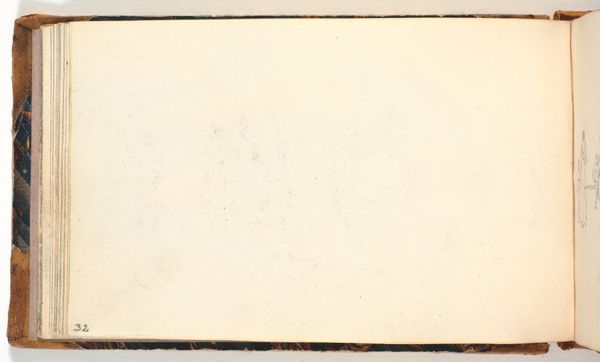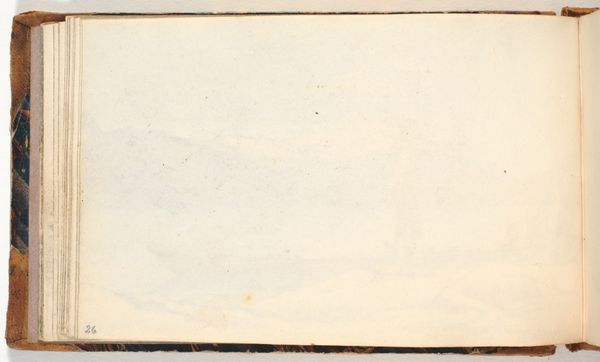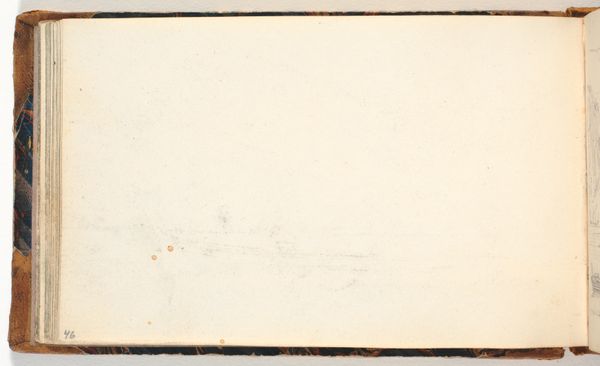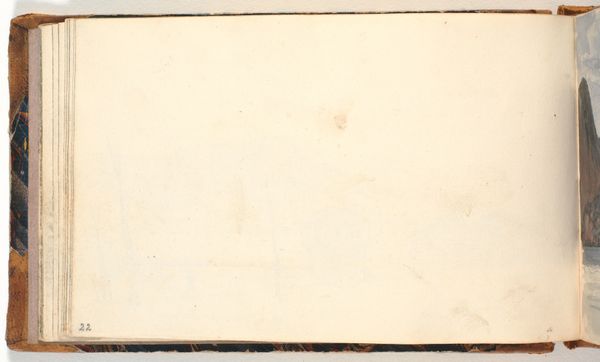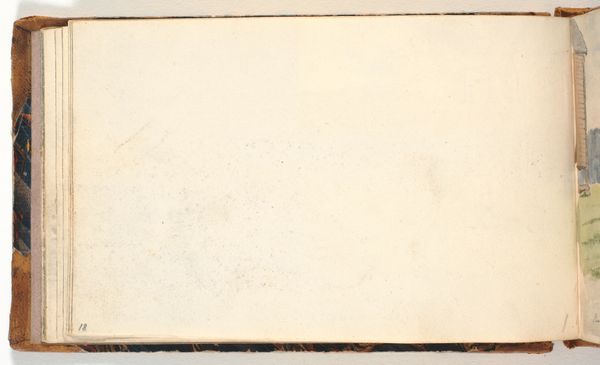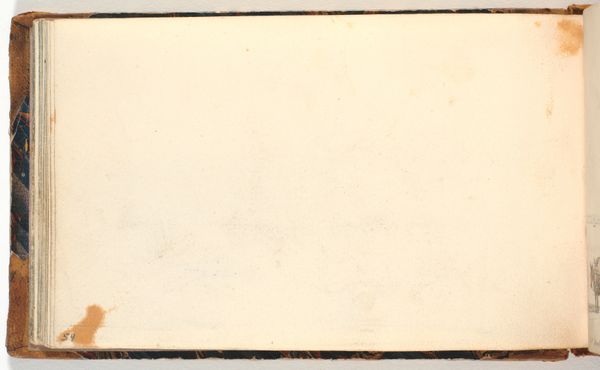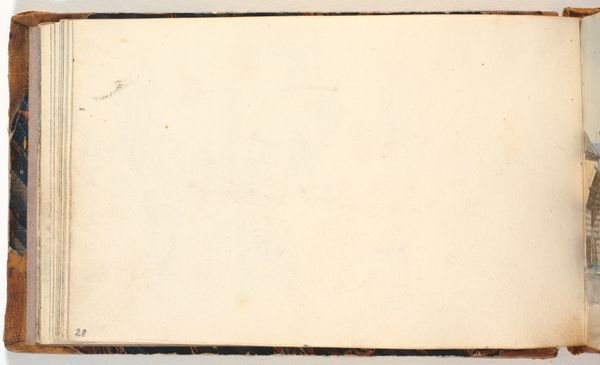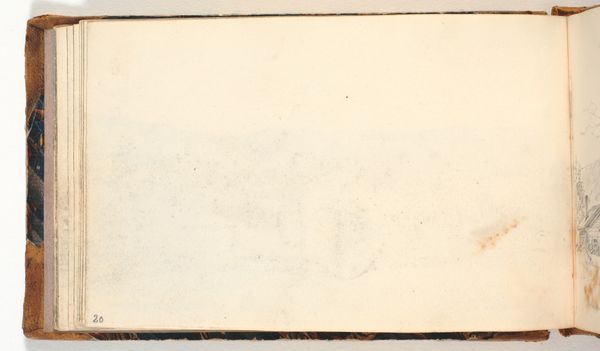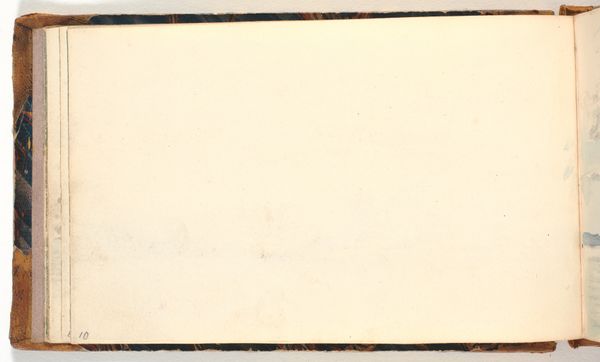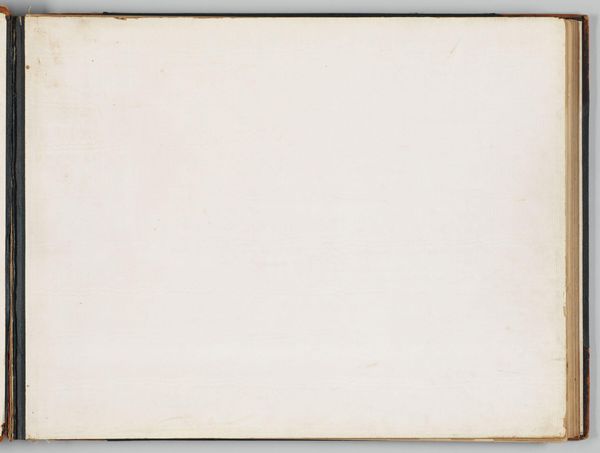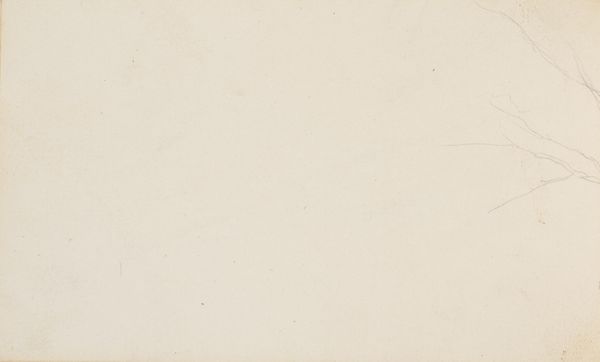
paper, watercolor
#
water colours
#
landscape
#
paper
#
watercolor
#
romanticism
#
watercolor
Dimensions: 107 mm (height) x 179 mm (width) (bladmaal)
Curator: Here we have a work titled "Blank" from 1832, crafted by Martinus Rørbye, residing here at the SMK. It's watercolor on paper. Quite minimal, isn’t it? Editor: Minimal is one word for it! It’s an open page, worn at the edges, within what looks like a travel journal. The emptiness is almost overwhelming. Gives me a melancholic feeling, like potential unrealized, or a story left untold. Curator: Yes, Rørbye was a master of light and atmosphere. The way he allows the paper to breathe is fascinating. But let’s consider the materials. He’s chosen watercolor, which is so portable, so immediate. And it is worth nothing that he chose not to paint on this medium. What does that imply, what does it ask the viewer? Editor: It certainly highlights the deliberate nature of absence. Knowing watercolor’s history as a medium for sketches, for documenting landscapes and experiences, that blankness almost screams louder. Consider also the binding of this notebook. How much did the labour for such intricate detail of binding weigh? What was the market of books like back then? I think the context really shifts our understanding of "blank." Curator: Absolutely. And perhaps it invites us, the viewers, to participate, to fill in the blanks ourselves, with our own interpretations, our own memories. It almost functions like a mirror... a slightly faded mirror reflecting our own experiences back at us. A really daring move for romanticism! Editor: A commercial romantic painter using a blank page - its silence speaks volumes about class and leisure and, like you say, participation and spectatorship. Very telling indeed. Curator: A potent combination of intention and open invitation, isn't it? It encourages a shift from passive viewing to active co-creation. Food for thought indeed! Editor: Indeed. A blank page speaks of both the material conditions of its creation, but it also acts as a poignant statement on Romantic art and the society it comes from.
Comments
No comments
Be the first to comment and join the conversation on the ultimate creative platform.
